- Register
- Log in to Tune-In
- Wishlist (0)
-
Shopping cart
(0)
You have no items in your shopping cart.
Beatles News

If there's one phrase that best sums up the Beatles' final album, Let It Be, it is this: "The road to hell is paved with good intentions".
No album made by the Fab Four began with such high hopes and no album ended with so much recrimination and inter-band hostility. Some have even suggested it was the record that broke up the Beatles.
Looking around there's more than a little evidence to support that view. John Lennon described the music as "the shittiest load of badly recorded shit".
George Harrison recalled the album's creation this way: "For me to come back into the winter of discontent with the Beatles ... was very unhealthy and unhappy."
Asked about the feeling in the studio, Lennon was even more scathing: "It was just a dreadful, dreadful feeling ... by the time we got to Let It Be we couldn't play the game anymore."
Source: abc.net.au
details
As most of the world has known well for decades now, in terms of songwriting, there was no pressing need for Ringo to start writing songs. His bandmates Lennon and McCartney had that handled to a miraculous extent, writing songs which have become timeless, inspirational anthems for humanity.
Paul and John also were remarkably prolific and capable of writing masterpieces overnight (as did Lennon with “A Hard Day’s Night,” written overnight as their movie theme song to this title which came from a Ringo quip.)
So when George Harrison began writing his own, even he had to compete with his bandmates for inclusion on the albums. By Abbey Road, the final album they recorded, George was allotted all of two songs, contributing two of his greatest ever, adding dimensions to that album only he could bring.
Source: Paul Zollo/americansongwriter.com
details

George Harrison is undoubtedly the coolest Beatle but he was also one of the most dryly funny. Growing up in Liverpool had blessed all the members with a caustic course wit but Harrison only reserved it for the most enjoyable moments.
One such moment came from the below letter from 1968 when Harrison and The Beatles were at the peak of their powers and on top of the world. Literally. After a fan writes to Harrison asking for money to buy a sitar, Harrison responds with a drawing and a smirking retort.
The Beatles had just released the White Album and were in unprecedented demand. Such high demand in fact that the group retreated to the Himalayas, namely Rishikesh in northern India as part of a Transcendental Meditation course with Maharishi Mahesh Yogi. It was during these blissful moments that Harrison received a letter from a fan.
Source: Far Out
details
It’s become an iconic scene: The Beatles carrying out their last-ever live performance on the roof of Apple Corps, joined by keyboardist and general legend Billy Preston, their long hair flipping around in the London wind while they recorded live takes of songs like “Dig a Pony” and “Don’t Let Me Down” before eventually being shut down by the Metropolitan Police.
The event was unannounced. Onlookers gathered on their lunch breaks, looking up at the midday sensation. This was the concert from which the final version of the Let It Be album would in part manifest, preserving takes of three of its songs.
Source: Laura Dzubay/consequenceofsound.net
details
As President Trump toured an N95 mask manufacturing plant in Phoenix on Tuesday, his visit through the facility was accompanied by a head-scratching musical soundtrack: the Paul McCartney-penned “Live and Let Die,” as performed by Guns ‘N Roses.
The president and his entourage were touring a Honeywell factory that produces the masks, worn by medical workers to protect them from breathing in the deadly COVID-19 virus. Standing next to a green bin filled with hundreds of masks, a notably un-face-masked Trump watched an employee work as the music segued from the Animals’ “House of the Rising Sun” into the song McCartney wrote and recorded for the James Bond film of the same name.
The background music for the tour also included Trump rally stalwarts such as Lee Greenwood’s “God Bless the U.S.A.” and Survivor’s “Eye of the Tiger.”
Source: Randall Roberts/latimes.com
details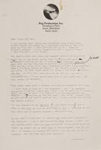
We’re dipping into the Far Out Magazine vault to bring you a scathing letter written by a furious John Lennon and Yoko Ono to Paul McCartney and his wife Linda. It offers a fascinating insight into the relationship of The Beatles songwriting duo following the band’s split.
The typed letter, which includes multiple handwritten additions from Lennon, is undated but research suggests that is dated back to 1971 in the immediate months after The Beatles called it a day. It’s a stark reminder of hos far the duo’s friendship had come in such a short space of time.
Signed by both Lennon and Ono and written underneath their Bag Productions Inc. letterhead, Lennon is replying to a letter Linda McCartney had sent him prior—a missive that he is seemingly furious about. “I was reading your letter and wondering what middle-aged cranky Beatle fan wrote it,” he began.
Source: Lee Thomas-Mason/faroutmagazine.co.uk
details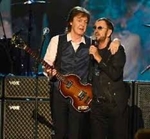
An unheard track by Paul McCartney and Ringo Starr, recorded after The Beatles split and believed to be the only song written together by the pair, is set to be auctioned.
Angel In Disguise was recorded by thestars as a demo for Sir Ringo's 1992 solo album Time Takes Time, but didn't make the final cut.
The cassette is being sold by former Radio Luxembourg DJ Tony Prince, who was asked to find artists to record alternative versions after The Beatles drummer rejected the track, and is expected to fetch up to £20,000.
It has never been heard publicly and could be the only song co-written exclusively by Starr and The Beatles' bassist McCartney, according to auctioneers.
Paul Fairweather, from Omega Auctions, said: "It's fantastic to be able to bring to the market a previously unheard and unreleased track...
Source: news.sky.com
details
Paul McCartney has been discussing the one infamous John Lennon song that arrived as a hurtful blow upon its release in 1971.
‘How Do You Sleep?’, a song that featured on Lennon’s now-iconic album Imagine, would undoubtedly be described as a no holds barred ‘diss track’ if it was released in 2020.
The song, littered with angry and cutting remarks aimed at his former Beatles bandmate McCartney, arrived in response to the not-so-subtle comments made by Macca in his debut album Ram. To make the situation worse for McCartney ‘How Do You Sleep?’ also includes a slide guitar solo contribution from George Harrison.
With lyrics such as “the only thing you done was ‘Yesterday'” and “the sound you make is muzak to my ears”, the song was relentless in its aim to put down McCartney’s musical talents and contribution to The Beatles. Shortly after the album was released, Lennon said that the song “was an answer to Ram” but did his best to backtrack a potential war of words.
Source: faroutmagazine.co.uk
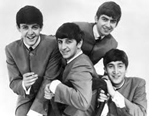
Many Beatles songs revolve round fictional characters. Life is likely to be a bit extra attention-grabbing if there was an actual Sgt. Pepper or an actual Maggie Mae. However, that’s not the case.
“Mean Mr. Mustard” is among the Beatles’ most whimsical songs. Some followers assume it’s a couple of fictional character as are their different songs. Actually, the observe facilities on an actual man: John Alexander Mustard.
Lots of individuals wish to see their title on the entrance web page of a newspaper. When Mustard bought on the entrance web page, nonetheless, the information wasn’t flattering. The article was about how low-cost he was.
The article famous how Mustard would shave at nighttime – similar to the character within the Beatles music. Mustard would additionally flip off the lights in his house when he and his spouse listened to the radio as a result of he felt they didn’t have to see to benefit from the radio. The article even mentioned Mustard would conceal cash in a non-public a part of his anatomy to maintain it from others. Eventually,
Source: Jeremy Spirogis/sahiwal.tv
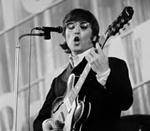
John Lennon, alongside his Beatles bandmates, released 13 studio albums worldwide between 1962 and 1970 and established a musical legacy like no other. Some six decades after they first got together, the world is still endlessly talking about John Lennon, Paul McCartney, George Harrison and Ringo Starr; The Beatles.
From Please Please Me right up until Let It Be, four friends from Liverpool would achieve monumental fame and success in an astoundingly short period of time. While the group enjoyed massive highs, they battled through their fair share internal tension and touring mishaps along the way.
In their rise to rock and roll fame, the band recorded in excess of 300 songs and, predictably, not all of them hold the same weight. In the years after the Beatles split, John Lennon was often drawn into a conversation about self-reflection and, across those meetings, he named a number of tracks that he was less fond of.
Source: faroutmagazine.co.uk
details
An unheard track by Sir Paul McCartney and Sir Ringo Starr recorded after the Beatles split is heading for auction.
Angel In Disguise could be the only song co-written exclusively by the band’s former bassist and drummer, according to auctioneers.
The ex-Beatles recorded the demo for Sir Ringo’s 1992 solo album Time Takes Time but it did not make the cut.
Under the hammer: An unheard track by Sir Paul McCartney (pictured and Sir Ringo Starr recorded after the Beatles split is heading for auction
Former Radio Luxembourg DJ Tony Prince is selling the cassette, which is expected to fetch up to £20,000.
He was asked to find artists to record alternative versions of Angel In Disguise in the 1990s, after Sir Ringo rejected the track.
The song has never been heard publicly.
Source: Jason Chester/independenteagle.com
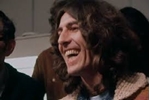
We’re dipping into the Far Out Magazine vault and looking back to one of George Harrison’s best songs with The Beatles, the beautiful and timeless love song ‘Something’. Released in 1969 the single would be Harrison’s first number one and mark him out as a wildly talented songwriter.
When artists such as Frank Sinatra pick out your work and label it as “the greatest love song of the past 50 years,” you know you’re doing something right. But who was this pop ode in aid of? Many people pointed to Pattie Boyd but the answer is a little more convoluted than that.
‘Something’ will forever remain a special track for George Harrison. Not only was it the first song he was able to releases with The Beatles as a fully-fledge single. But it was also the first song fro The Beatles to reach number one that wasn’t suffixed with “written by Lennon-McCartney.”
Source: Jack Whatley/faroutmagazine.co.uk
details
American singer and record producer Jon Bon Jovi was recently interviewed by legendary TV/Radio Host Howard Stern and revealed the latest news about his upcoming album.
As you might already know, The Howard Stern Show is still going on even in the self-quarantine. Howard Stern is taking guests via video conferences and Jon Bon Jovi was the latest guest of the iconic TV host.
In that rare interview, Jon Bon Jovi explained how The Beatles legend Paul McCartney shared his opinion after listening to his latest album for the first time.
Here is what he said:
“Whenever you run into him you become a teenage fan. We went to see The Eagles play. I said, ‘Beatle Paul.’ He said, ‘Why do you call me Beatle Paul?’ I said, ‘Because I’m too old to call you Mr. McCartney and I’m too in reverence to dare think that we’re that close that I can contact you Paul.
Source: Enes K/metalheadzone.com
details
The extensive back-catalogue of The Beatles is the envy of any musician worth their salt. Such is their massive list of impressive records most artists would be happy with just one of their famed LPs. Here, Sir Paul McCartney, arguably the band’s dynamic musical leader, selects his favourite The Beatles LP of all time.
McCartney remains to this day a very active advocate for the work he did with The Beatles. And rightly, so. The singer has become synonymous with pop music through his craft and having written some of the world’s most beloved songs it’s a fair assessment that he always will be. A career that spans nearly six decades is testament to that.
In this revealing 1991 interview, McCartney suggests that he had a love for all the albums he, John Lennon, George Harrison and Ringo Starr made together. But he did confess that his favourite was the iconic concept album from 1967 Sgt. Pepper’s Lonely Hearts Club Band.
Source: faroutmagazine.co.uk
details
“Who’s your favorite Beatle?” It’s something I am fond of asking – especially during discussions I feel are escalating towards unpleasantness.
Two reactions are most common: laughter, at the incongruity of the question. Or irritation, because I am not taking the issue at hand seriously. Either way, the conversation is derailed and the tension broken.
But I really do want to know the answer. I think the choice of a favorite Beatle is a very telling signal of a person’s mental and emotional make-up. If someone has no answer — that too is telling.
Some day (not soon, I hope), this is a question I want to ask Jesus. Who is His favorite Beatle? I’d love to know. I assume Christ will profess to liking them all equally, but this is not an answer. So, if I don’t run the risk of being turned into a burning bush or pillar of salt, I will press Him to name one.
Let’s look at the options:
Source: Tom Wilmeth/somethingelsereviews.com
details